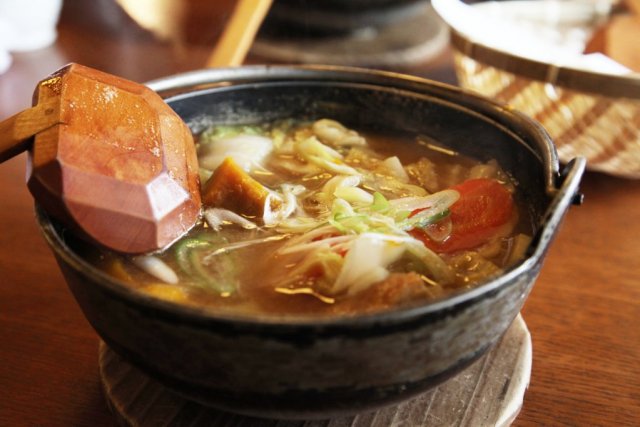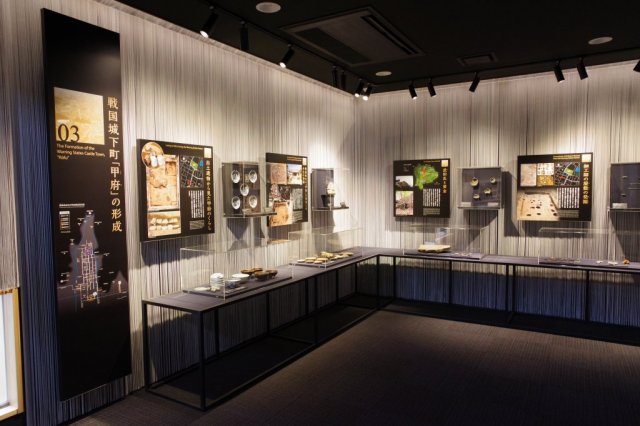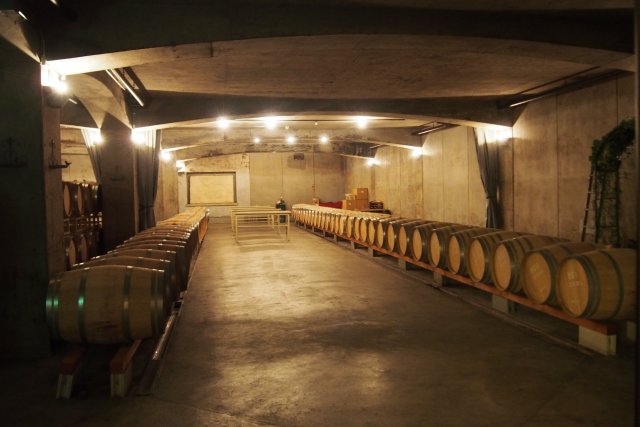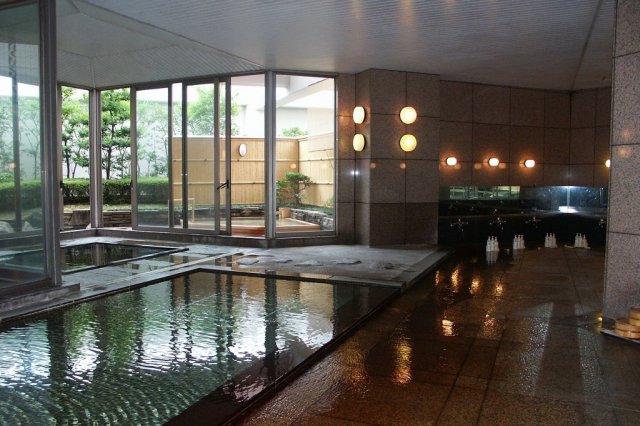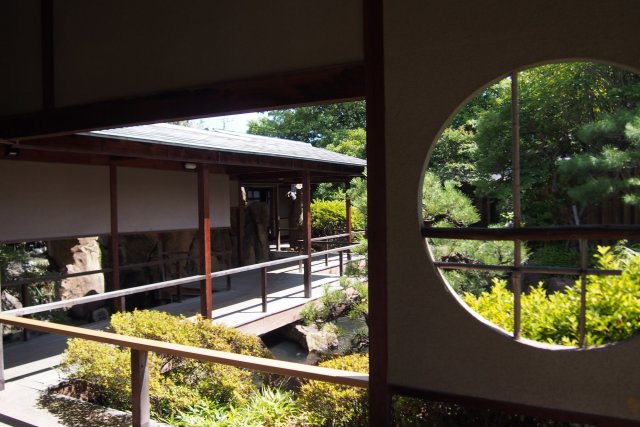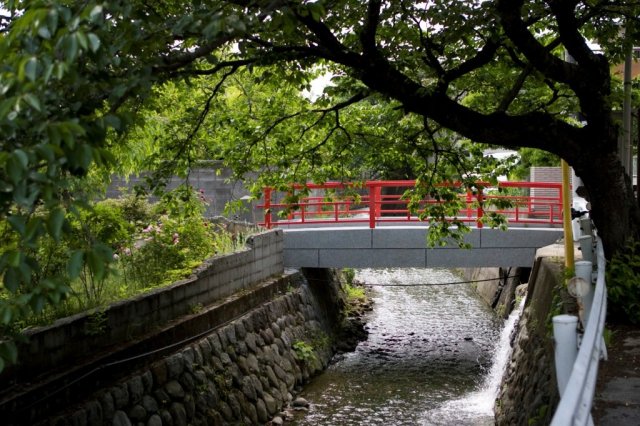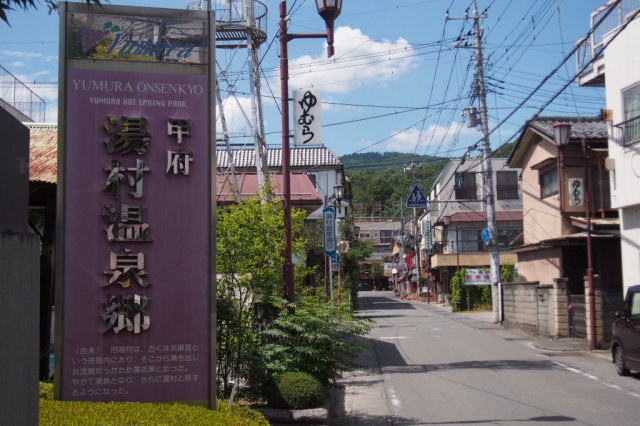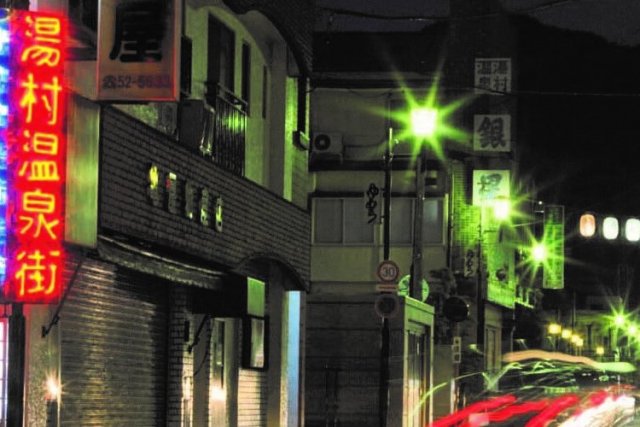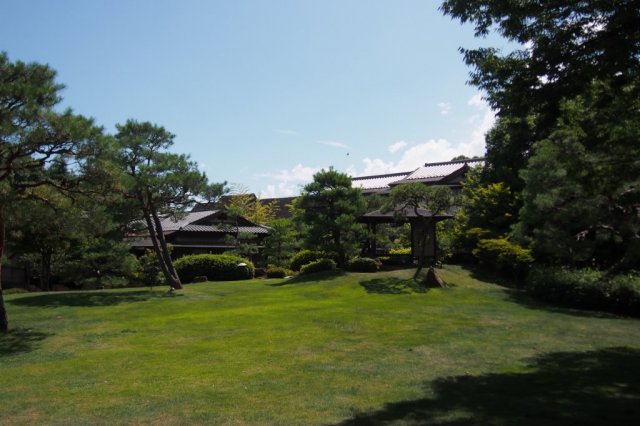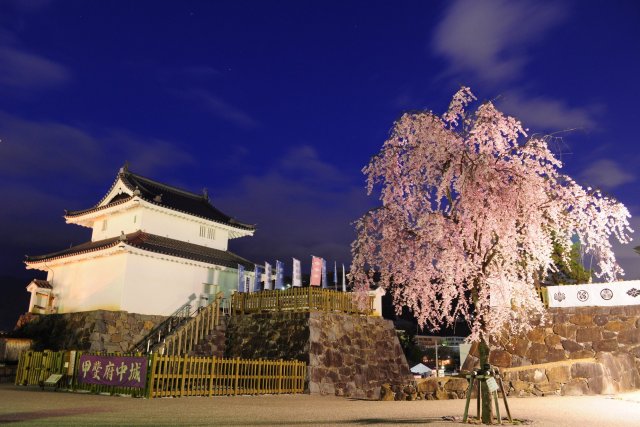
Make the most of your two days in Kofu by visiting the city’s historical and cultural attractions! This itinerary includes locations connected with the famous warrior Shingen Takeda who ruled over Kofu and the city’s museum known as the “Museum of Jean-François Millet”. Enjoy savouring local specialties including the famous Hoto Noodles and a selection of excellent local wine, and complete your day with a relaxing hot spring bath at historic Yumura Onsenkyo!
START
Kofu Station
↓Approx. 1 min on foot
↓Approx. 1 min on foot
1
【DAY 1】Takeda Shingen Statue
A statue of the legendary warrior who once ruled over Yamanashi
-
The statue of Shingen Takeda is a well-known symbol of Kofu city and a popular location for photographs.
Approx. 10 min on foot
2
【DAY 1】Hoto Noodles Restaurants
Traditional dish of Kofu
-
Hoto Noodles are a traditional dish of Kofu consisting of simmering thick, flat noodles cooked together with in-season vegetables in miso soup. Hoto Noodles with fluffy and sweet Kabocha squash are a favourite local staple! Legend has it that the famous warrior Shingen Takeda who ruled over Kofu enjoyed Hoto Noodles as a meal between battles.
Approx. 10 min by car or Approx. 35 min on foot or Approx. 8 min by bus
3
【DAY 1】Takeda Shrine
Shrine dedicated to the famous warlord and former ruler of Kofu Takeda Shingen
-
One of Kofu's most famous spots, Takeda Shrine is located on a major landmark of Japanese history: the ruins of the Tsutsujigasaki fortified residence, from which three generations of the powerful Takeda clan reigned over Kai province –modern-day Yamanashi prefecture– during Japan's Warring States period in the 16th century.
The stronghold fell into ruins after the clan's demise in 1582 and the center of Kofu shifted south to Maizuru Castle, but some of the original moats and stone walls still remain on the premises of this shrine built in 1919, exactly 400 years after the birth of Kofu, to commemorate its revered leader.
The Homotsuden treasure house exhibits authentic weapons and armor from the Takeda clan, including a sword donated by the family of Shingen's wife.
A number of locations within the shrine’s precincts are thought by locals to bring good fortune, such as the "princess well" and the sacred trident pine tree, whose golden needles come in rare bundles of three said to bring economic prosperity to those who pick them up.
Takeda shrine is an especially popular spot to enjoy the cherry blossoms in the spring, with about 50 cherry trees planted on the site and many more lining the entire 2km-long Takeda-dori street leading to the shrine from Kofu station.
Opposite the shrine grounds is a brand new museum introducing the history of the Takeda clan, opened in April 2019.
Approx. 1 min on foot
4
【DAY 1】Takeda clan History museum
Discover the history of the Takeda clan who once ruled over Yamanashi at this newly opened museum!
-
The Shingen Museum is a new history museum which opened its doors to the public in April 2019.
Approx. 35 min on foot
5
【DAY 1】Sadoya Winery
Kofu's most historic winery, at the heart of a southern France-inspired village
-
With a history stretching back one hundred years to 1917, Sadoya is Kofu's oldest winery, located just a 5-minute trek from the bustling downtown area of Kofu station, in a beautiful village themed after the French wine-making region of Provence.
The winery prides itself on growing the same grape varieties as in the Bordeaux region: Semillon for its white wines and Cabernet Sauvignon for its reds. Its flagship wine, "Château Brillant", can be found in the on-site shop along with the ever-so popular "Kofu Sparkling", made from local yeast and Koshu grapes.
Tours of the winery complete with wine tastings are available in Japanese, and the picturesque estate also houses "Real D’Or", a restaurant inspired by French cuisine where one can enjoy a lavish dinner and a Sommelier-picked wine-tasting course.
Approx. 5 min on foot to Kofu Station
↓Approx. 15 min by bus
↓Approx. 15 min by bus
6
【Stay】Yumura Onsenkyo
A relaxing soak in the footsteps of Lord Shingen and famous Japanese artists
-
Natural hot springs have been loved by Japanese people since ancient times, for being not only relaxing and refreshing but also benefiting health and beauty.
Here in Kofu, the long and distinguished history of the Yumura Onsenkyo hot springs dates back 1,200 years; the legend says the area was discovered by Kukai –also known as Kobo-Daishi–, the Japanese monk who established the Shingon sect of Buddhism, when he struck the ground with his walking stick, causing a hot spring to gush out.
This well-known resort is known to have been frequently visited by prestigious 16th century Japan warlord and Kofu hero Takeda Shingen, famous ukiyo-e printmaker Hokusai, and a number of acclaimed Japanese writers, among which Dazai Osamu, who would often come on retreats to focus on their writing. The premises are home to a variety of hot spring inns where visitors can enjoy Yamanashi's incredible natural surroundings from the comfort of open air baths and gardens!
Not interested in staying the night? The resort welcomes day visitors looking for a short soak as well. Be sure to ask for a "Yumura-Tegata" pass to enjoy the hot spring baths of Yumura Onsenkyo to the fullest, for a discounted price!
Approx. 25 min by bus or Approx. 12 min by car
7
【DAY 2】Yamanashi Prefectural Museum of Art
The museum known for its large collection of the artworks of Jean-François Millet
-
Yamanashi Prefectural Museum of Art is known as the “Museum of Jean-François Millet”, housing a collection of 70 works of Millet along with works of prominent Japanese artists, a collection of 10,000 artworks in all.
The museum is located in Geijutsu-no-Mori Park where visitors can enjoy strolling around sculptures by famous artists including Auguste Rodin with a magnificent view of Mount Fuji. The Rose Garden and Peony Garden in the park also fascinate visitors with their seasonal beauty.
Approx. 20 min by bus to Kofu Station
↓Approx. 5 min on foot
↓Approx. 5 min on foot
8
【DAY 2】Maizurujo Park (Kofu Castle Ruins)
One of Japan's 100 most famous castle sites, faithfully reconstructed
-
Kofu Castle was built in the late 16th century after the downfall of the powerful Takeda clan by order of Toyotomi Hideyoshi, one of the three great unifiers of Japan, and used to be a major strategic stronghold protecting the west of Edo, present-day Tokyo.
While it was destroyed in a fire in 1727, the original stone walls remain, and parts of the castle, such as the gates and the Inari-yagura watchtower, have been faithfully reconstructed in recent years using traditional methods from the original time of construction.
The highest point of the park, which is presumed to have been where the castle keep once stood, offers an unbroken panoramic view of the city, the Kofu basin, the Koshu Yume Koji shopping street, the surrounding mountains and Mount Fuji on a clear day.
The park is an especially popular spot in the spring, when it becomes abound with visitors looking for a stroll or a relaxing time under the 160 beautiful cherry trees blooming on the premises, with beautiful views of Mount Fuji in the background!
Approx. 5 min on foot
9
【DAY 2】Koshu Yumekoji
A shopping alley in the heart of a traditional Japanese castle town
-
Koshu Yumekoji is home to a wide range of shops offering local produce including a variety of local wines and traditional crafts. The complex also has a number of restaurants and cafes where visitors can enjoy regional cuisine and sweets.
Approx. 5 min on foot
10
【DAY 2】Kofu City History Park
Gaze up at the reconstructed castle gates and Mount Fuji from the heart of the city
-
Located in the heart of Kofu on the north side of the station, Kofu City History Park is a lovely park to stroll around in while surrounded by historical buildings faithfully reconstructed using traditional methods.
The splendid view of Mount Fuji visitors can enjoy on a clear day from the park and the observation deck of the Yamanotegomon Gate is one of the 100 most famous in the Kanto region.
Come early April, the rare, once extinct "Great White" cherry trees planted on the park's premises bloom into life and blend in beautifully with the white walls of the Yamanotegomon Gate.
GOAL










